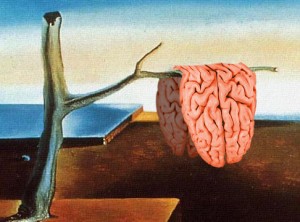This year’s Annual Conference of the American Psychology Law Society (Division 41 of the American Psychological Association) was held in Portland, Oregon, a fortuitously appropriate location for the ongoing debate about how to diminish problems associated with eyewitness testimony.
Recently, the Oregon Supreme Court issued an important decision, in State of Oregon v. Lawson (2012), about procedures for managing potentially unreliable eyewitness testimony; the decision was Oregon’s answer to another groundbreaking case, State of New Jersey v. Henderson (2011).
In the Henderson case, which CLBB faculty member Dr. Daniel Schacter, Professor of Psychology at Harvard University and a leading researcher on memory, discussed at CLBB’s recent event “Memory in the Courtroom: Fixed, Fallible, or Fleeting?”, the court reviewed extensive scientific research and heard expert testimony from eyewitness researchers about empirically identified problems in memory encoding, memory recall, and factors that can and cannot be controlled by investigators to minimize bias and error (e.g., length of time between the crime and witness interview, visibility at the scene of the crime).
The court ruled that when eyewitness testimony is presented, jury members are to be given a set of instructions (ranging in length from 6 to 10 pages, depending on the type of testimony) about scientific research on memory and eyewitness testimony. Although neuroscientific research on memory was not directly referenced in the Henderson case, Dr. Schacter and Judge Nancy Gertner of Harvard Law School, a fellow panelist at the January 31 CLBB event, discussed how neuroscientific research could be used in the future to help jurists and juries decipher the complexities of eyewitness testimony.

Judge Martha Walters of the Oregon Supreme Court gave the opening plenary session at this year’s American Psychology Law Society meeting.
At the opening plenary session of APLS, Judge Martha Walters of the Oregon Supreme Court discussed the state’s Lawson case and how the court applied scientific research on eyewitness testimony to established standards of practice for Oregon trial courts. Both the Oregon and New Jersey courts recognized advances in research on eyewitness testimony and memory and acknowledged problems that until recently have largely been discounted by the courts. In fact, the Lawson decision overruled a 30-year precedent case that provided guidelines on managing eyewitness testimony in Oregon (State v. Classen). However, unlike Henderson, the Lawsoncourt ruled that the judge should be the gatekeeper of misleading eyewitness testimony and that the state had the burden of proving that potentially problematic eyewitness testimony should be admitted at trial.
Judge Walters acknowledged the importance of scientific research in advancing legal decision-making, especially in the case of eyewitness testimony. She then encouraged psychologists (and scientists more broadly) to continue producing reliable and cross-disciplinary research that can help the courts better understand complicated social and legal questions. However, Judge Walters cautioned that as in the 1908 case of Mullen v. Oregon, where future Supreme Court Justice Brandeis introduced a scientific research brief (which later came to be known as Brandeis Briefs), the scientific community must use caution in its assertions and conclusions. In that famous case, Brandeis put forth data that women were weaker than men and required reduced work hours in order to protect their health. This is a well-timed reminder that like law, science changes and hasty conclusions may result in problematic outcomes. All of the panelists at the CLBB event echoed similar sentiment that direct application of neuroscientific findings to legal questions may be premature.
On a related note, several researchers at APLS presented data on eyewitness testimony that sought to address the generalizability limitation inherent in much of the neuroscientific and social psychology research. Generally, such studies use college students as participants, a sample that is problematic for translating the findings to real-life witnesses. Studies from Memorial University of Newfoundland and Royal Holloway, University of London examined eyewitness testimony with perhaps more comprehensive samples (rather than the commonly used undergraduate students as research participants), elderly adults and adults with autism-spectrum disorder. Unsurprisingly, the findings indicated that these participants fared worse than usual samples in recalling information and providing reliable eyewitness testimony.
While few presentations at APLS used neuroscientific findings, those that did focused almost exclusively on how jury decision-making is impacted by the introduction of genetic and neuroimaging data. Researchers at Arizona State University found that many factors mediated jurors’ decisions about sentencing and responsibility, highlighting that the relationship between introduction of neuroscientific data and outcomes is complicated. A poster from Western Washington University suggested that juror decisions about guilt were not impacted either way (i.e., guilty or not guilty) by the presence of neuroimaging data.
As neuroscience is increasingly employed in an attempt to answer or at least assist with legal dilemmas, it will be essential to remain cautious and move slowly. Additionally, communication and collaborative research between psychology, psychiatry, neurology, neuroscience, and other related fields will become essential so that complicated legal questions can be answered in a holistic, practical, and scientifically sound manner.
Link to the NJ Supreme Court Decision (NJ vs. Henderson)
Below, view the Oregon Supreme Court Decision (Oregon vs. Lawson):




